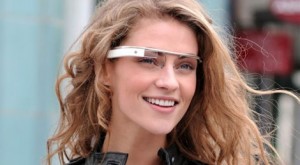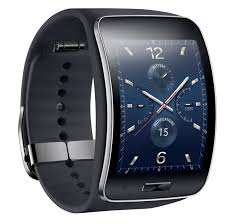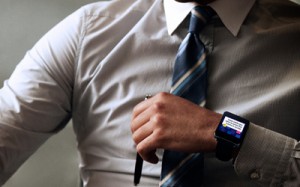As technology advances and grows more compact over time we’re going to have to revisit rules and laws related to it on a regular basis. For instance, the texting and driving rule is very important — no one should ever text and drive.
Over recent months local and state legislators have begun passing laws prohibiting texting while driving. However, there are dozens of tools one could use to keep their attention on the roads while they respond in full. You could use a wearable like a smartwatch to respond via voice. You could use an in-car entertainment system, provided it offers the necessary hands-free functionality. You could use a Bluetooth headset with integrated voice controls. The list goes on when it comes to hands-free stuff.
That said, things are changing rapidly.
 Smartphones allow you to carry a powerful computer in your pocket, and now smartwatches allow you to carry a powerful computer on your wrist. It won’t be long before there’s another leap in technological evolution and these devices are even smaller. Hell we already have things like the Raspberry Pi, Chromecast, Intel Compute Stick and multiple other devices that shrink working computers and electronics down even more in size.
Smartphones allow you to carry a powerful computer in your pocket, and now smartwatches allow you to carry a powerful computer on your wrist. It won’t be long before there’s another leap in technological evolution and these devices are even smaller. Hell we already have things like the Raspberry Pi, Chromecast, Intel Compute Stick and multiple other devices that shrink working computers and electronics down even more in size.
It doesn’t come as a surprise then that certain rules, laws and codes of etiquette must also be adapted to fit this new world of gadgetry. What do we mean by that exactly? Let’s take a look at some recent news in the world of wearables and smartwatches to better understand those terms.
Weber State Bans ‘Smart’ Watches in Their Testing Centers
Similar to the high school bans on various TI branded calculators years ago — they had the capacity to play games and distract many students — Weber State has banned any wearable that constitutes as ‘smart’ in their testing facilities. In other words, students are required to leave any high-tech devices at home, be they worn on the rest, stored in the pocket or pinned to their lapel.
 It doesn’t come at a surprise at all, considering not only can some of these devices perform extremely advanced equations when it comes to math, they also have access to the internet of all things.
It doesn’t come at a surprise at all, considering not only can some of these devices perform extremely advanced equations when it comes to math, they also have access to the internet of all things.
According to Weber representative Allison Barlow Hess, no one has been caught using a ‘smart’ device to look up answers during a test, however faculty members identifed the rise in popularity of the devices and wanted to address concerns before any of that can happen.
“So it’s not that they caught anybody. It just became obvious to them that people were wearing a computer on their wrist.”
Weber State isn’t the only school to ban the use of such devices, the University of Utah has done something very similar. The difference is that at the University of Utah, instructors have the right to decide whether or not students can wear them in class.
Of course, the use of such devices during SAT, PSAT and Advanced Placement tests, administered by The College Board has also been outright banned. On the other hand, the ACT test currently has no policy against the watches, unless they start causing distractions during an exam, according to spokesman Ed Colby.
It won’t be long before similar policies are drawn up by colleges and universities across the country. If a college can do it, you better bet that an employer can enforce the same.
What Does This Mean for Wearable and Smartwatch Owners?
There are sweeping implications for this, namely bringing to light that there are places where donning a ‘smart’ device is not acceptable. To be honest, this isn’t really anything new. You may remember that certain restaurants and establishments outright forbade Google Glass wearers to bring the headset into their business? It’s no different than movie theaters requesting moviegoers to leave their phones in their pocket during the course of a film. There are places where these gadgets, devices and even wearables are acceptable and also places where they are not.
That said, it will certainly be easy for some to cause a stir if they are used to wearing their smartwatch or wearable device on their person at all times. Just like a regular wristwatch, it’s easy to forget that you’re wearing one at times. That does not excuse the abuse of proper etiquette when it comes to these devices, it just shows that one could have issues in their everyday life depending on what they’re doing and where they’re going.
What is Considered Proper Etiquette for Wearable Devices?
 Smartwatch and wearable etiquette is remarkably similar — if not an exact copy — of smartphone etiquette. In quiet places where you must be conscious of others, it’s always a good idea to leave your device on silent or vibrate so it won’t cause distractions. In places where there will be low light and it needs to remain that way — like during a movie or at a special dinner — you’ll want to be sure your display remains off. Out in the wild, be courteous of others and don’t take photos or video with your wearable — if it has the option to — of others without asking permission first.
Smartwatch and wearable etiquette is remarkably similar — if not an exact copy — of smartphone etiquette. In quiet places where you must be conscious of others, it’s always a good idea to leave your device on silent or vibrate so it won’t cause distractions. In places where there will be low light and it needs to remain that way — like during a movie or at a special dinner — you’ll want to be sure your display remains off. Out in the wild, be courteous of others and don’t take photos or video with your wearable — if it has the option to — of others without asking permission first.
Most of the general etiquette relies on logic and understanding of others. You’d be surprised how simple and easy etiquette really is, and yet most have no idea or could care less about exercising it. The point here is to be courteous of others and mindful of the environment around you. Just because you have an expensive and cool gadget on your wrist doesn’t mean everyone needs or wants to be exposed to it. It’s the same with smartphones. There are still a lot of people out there who refuse to use them and would prefer if others were mindful of that.
We’re not asking you to be a scrooge here. You bought the device and paid good money for it, by all means use it. We’re just saying be polite and courteous of others when you’re out in public spaces.
Will Wearable Devices and Smartwatches Be Banned Elsewhere?
 It’s difficult to say what the future might hold, but we can guarantee you that you’ll hear more rules and restrictions enforced when it comes to these devices. For example, your boss or managers may request that you leave your smartwatch at home when you’re in the office. Others might request that you turn off all devices during the daily or weekly conference meeting. Furthermore, various competitive or sensitive testing environments may require wearers to remove their devices.
It’s difficult to say what the future might hold, but we can guarantee you that you’ll hear more rules and restrictions enforced when it comes to these devices. For example, your boss or managers may request that you leave your smartwatch at home when you’re in the office. Others might request that you turn off all devices during the daily or weekly conference meeting. Furthermore, various competitive or sensitive testing environments may require wearers to remove their devices.
It all depends on how they affect the world around you, which — let’s be honest here — is potentially endless. There are so many different ways that these devices can affect and interact with the world and people around us. The possibilities only continue to grow each day as new devices hit the market with new features and functionality.
What are Your Personal Guidelines for Using a Wearable?
How do you feel about device etiquette in general? Do you have any personal guidelines or rules that you like to follow when using your ‘smart’ devices in public? Do you think it’s right or wrong for places to ban the use of such devices? What are some other locations or situations where you can see these devices causing problems?
